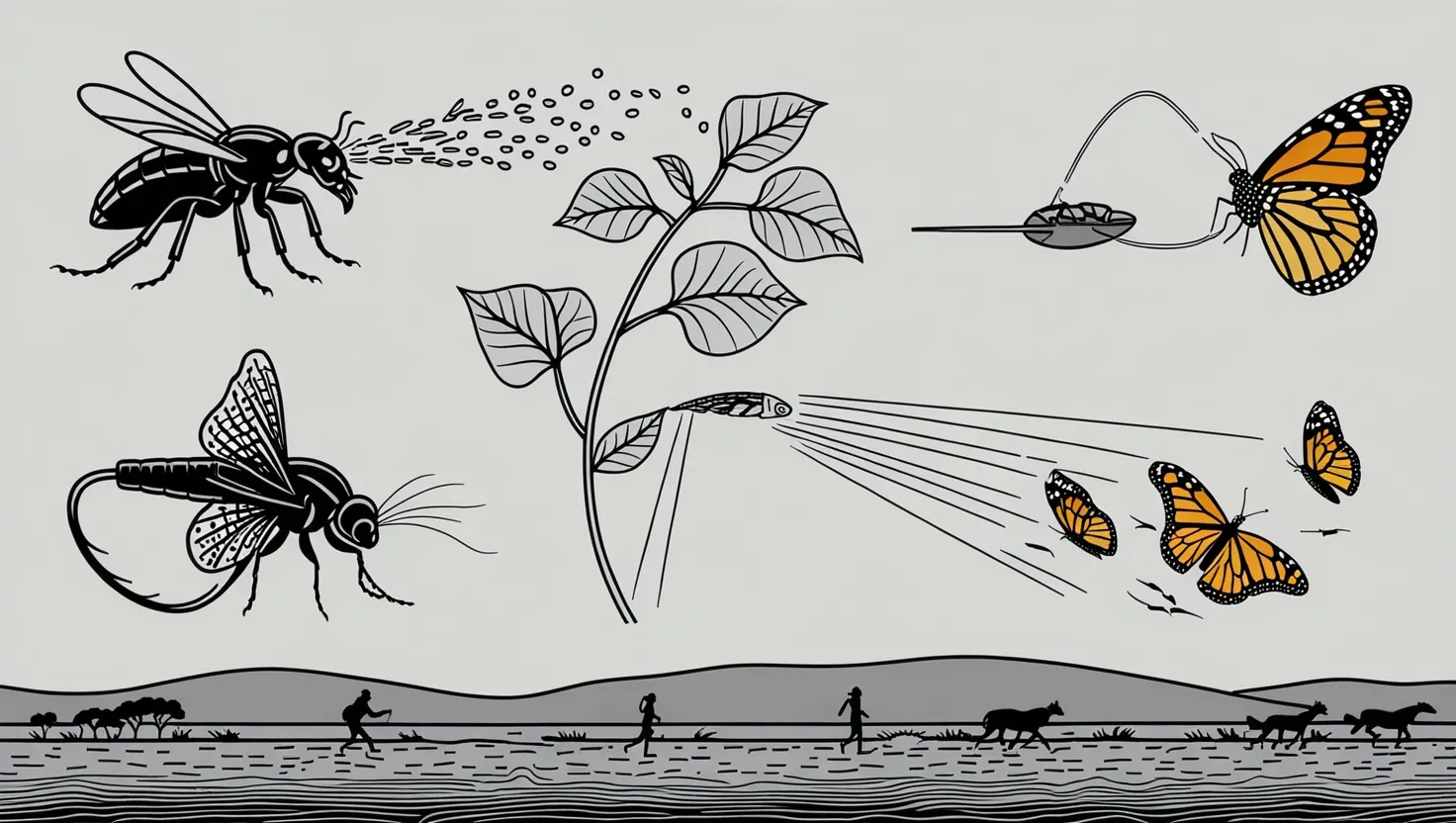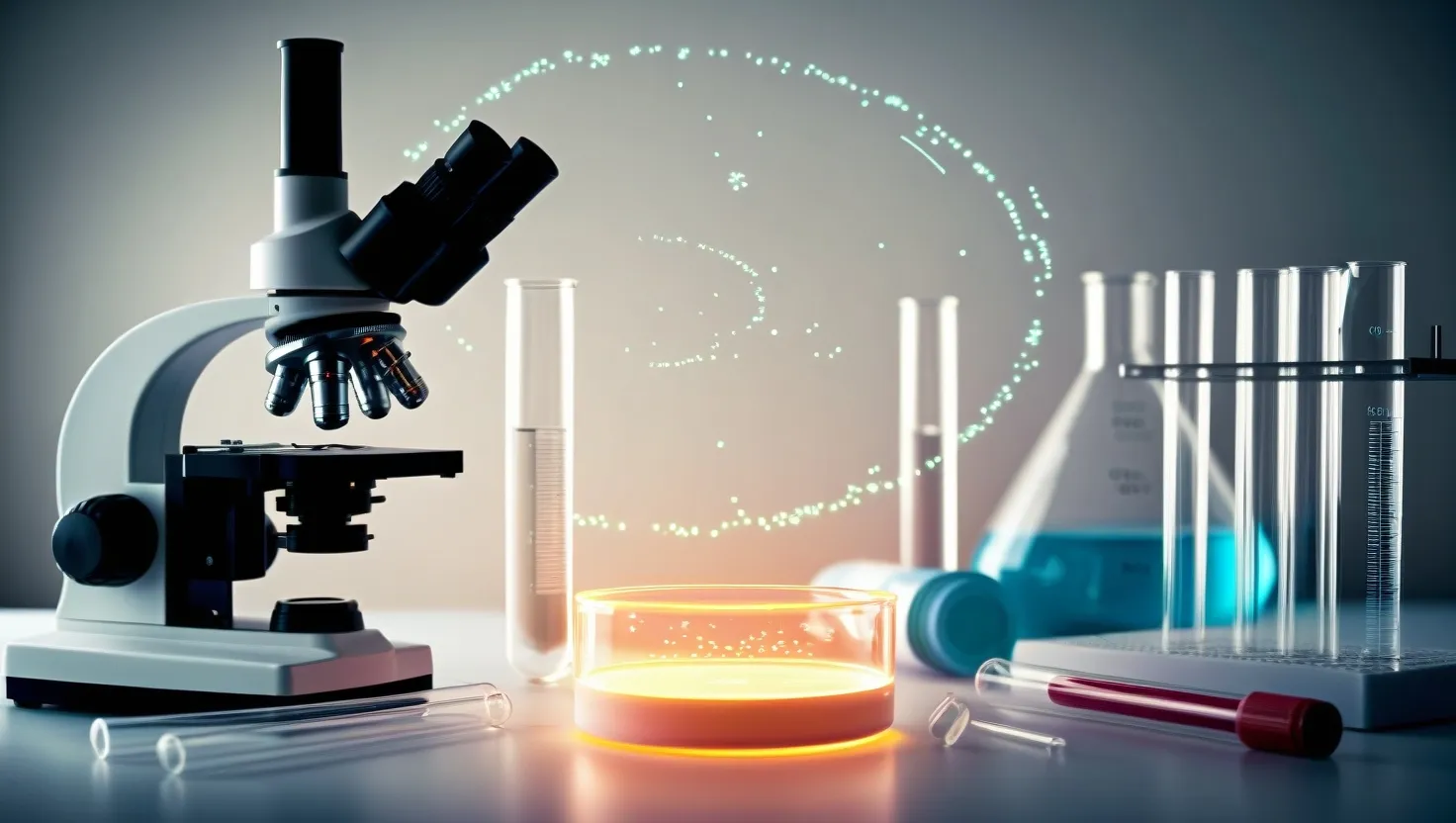If you ever find yourself face-to-face with a bombardier beetle, you’ll witness an insect armed with a chemical weapon so precise and volatile it would put many engineered devices to shame. This beetle doesn’t just defend itself; it launches boiling fluid at predators, using two separate chemicals that only mix at the last moment in a special chamber. The resulting reaction hurls liquid at precisely 100°C directly at the threat. What fascinates me is not only the sheer potency of this defense but the way evolution built such a system piece by piece—each tiny step, from storing caustic liquids to forming muscular valves, offered just enough benefit for survival. The beetle’s weapon is not a random accident, but a refined answer to the question: How do you make yourself truly inedible?
“Look deep into nature, and then you will understand everything better.” – Albert Einstein
Nature’s experiments are often hidden in the smallest gestures. Take the Mimosa plant. Unlike animals, it can’t run, bite, or hide. Instead, its leaves fold instantly when disturbed, an action called a seismonastic movement. Imagine a silent alarm that requires neither nerves nor muscle to work. Though it appears simple, beneath the surface, changes in turgor pressure within specialized cells drive this motion. Essentially, the plant moves water between cells, collapsing leaflets in a matter of seconds. Why does this matter? For a herbivore searching for a snack, a wilting leaf can mean the plant is sick, toxic, or simply not worth the trouble. Mimosa’s strategy isn’t to fight or flee—just to vanish, momentarily, from the menu.
Do you ever wonder how a fish might learn to shoot a target above water with more accuracy than most of us wield a water gun? Meet the archerfish. With remarkable precision, it spits jets of water to knock insects off branches up to two meters above. This isn’t a lucky shot. The archerfish’s eyes and brain compensate for the way light bends at the water’s surface—an optical trick most animals (and humans) would struggle with. It judges distance and angle, modulates the force of its jet, and times everything perfectly. With each shot, it solves a physics problem that would challenge high school students. The archerfish shows us that tool use and calculation aren’t human inventions but natural solutions to everyday problems—sometimes hiding in plain sight.
“In all things of nature there is something of the marvelous.” – Aristotle
Now, let’s consider how light itself can be shaped by living things. Bioluminescence is everywhere—the deep sea, tropical forests, and even moist woodlands. Yet it’s not always about spectacle. In the ocean’s most lightless zones, a tiny fish’s glow can distract predators or lure prey. On land, fireflies flash distinct patterns to attract mates or ward off danger. Fungi glow to attract insects that help spread their spores. What’s striking here is that this trick—making your own light—emerged independently at least forty times across life’s branches. Each adaptation began with different raw materials and ended up with similar chemistry. Evolution, it seems, finds ways to illuminate the darkness wherever it can. When we marvel at a glowing beach or a flickering firefly, we’re witnessing nature’s answer to a universal challenge: how to be seen, or not, in the struggle for survival.
Have you ever questioned how a butterfly, delicate and ephemeral, can find its way across a continent? Monarch butterflies, with wings thin as paper, travel almost 3,000 miles between Canada and their winter homes in Mexico. No single butterfly makes the full round trip. Each generation picks up where the last left off, carrying invisible instructions encoded in their DNA. Monarchs read the sun’s position, adjust for the time of day, and even sense Earth’s magnetic field. I often think of their journey as a relay, with each runner passing on not a baton but a memory written into their genes. It’s a navigation system that persists beyond any individual’s lifespan—a testament to how evolutionary adaptations can stretch the definition of knowledge and inheritance.
“What we know is a drop, what we do not know is an ocean.” – Isaac Newton
I find that looking at these adaptations together exposes an unexpected theme: ingenuity doesn’t always mean intelligence, and complexity doesn’t need a brain. With the bombardier beetle, there’s chemistry as advanced as any laboratory. In the Mimosa, you see motion achieved without muscles or nerves. The archerfish’s calculations rival those of a physicist, but it needs no lessons. Bioluminescence unites creatures who will never meet, each solving the problem of survival with their own spark. Monarchs cross continents, guided not by memory but information passed on invisibly, like a whispered secret through generations.
Have you considered that many of these innovations arose not from a single moment but through countless generations, each small mutation a step in a marathon? The beetle’s spray began as a mild irritant; Mimosa’s twitch may have started as a minor quirk. The archerfish’s squirt evolved from simple gulping, gradually refined by natural selection. Light-producing chemicals in one lineage benefitted reproduction; in another, they evaded predators. Butterflies’ navigation began with an instinct to move toward favorable climates, ultimately morphing into an epic, multi-generational trek.
Progress, in nature’s hands, is patient. It doesn’t plan, but it persistently favors what works. Each leap forward is rewarded by survival, however marginal. Often, what appears miraculous is an accumulation of tiny, relentless improvements stacked over time.
If we look closely, the real marvel is not the finished product but the journey: how nature asks, “What if?” a million times and answers incrementally, quietly, through the persistent filter of survival.
What would it mean if we tried to solve problems as patiently and creatively as the natural world does? The lessons are everywhere—from beetles that turn chemistry into defense, to fish that master optics, to plants moving without muscle, to butterflies navigating by inherited instinct. Nature’s solutions come not from foresight but from experiment, failure, and minute success. The more I study these adaptations, the more I appreciate the subtle genius running through every living thing—a genius born of time, pressure, and the ceaseless drive to adapt.
As Charles Darwin once said, “It is not the strongest of the species that survive, nor the most intelligent, but the one most responsive to change.” That, perhaps, is the thread connecting every adaptation I’ve described. Evolution’s real talent is its ability to sculpt responses—sometimes spectacular, usually unnoticed—that keep life moving forward against all odds.
So the next time you see a firefly’s glow, a plant fold its leaves, a beetle defend with a burst of steam, or think of butterflies on the wind, remember: each is proof that nature’s answers are often stranger, subtler, and more inventive than we imagine. And maybe ask yourself—what ingenious solution is quietly waiting to appear, shaped by the slow, steady hand of evolution?






